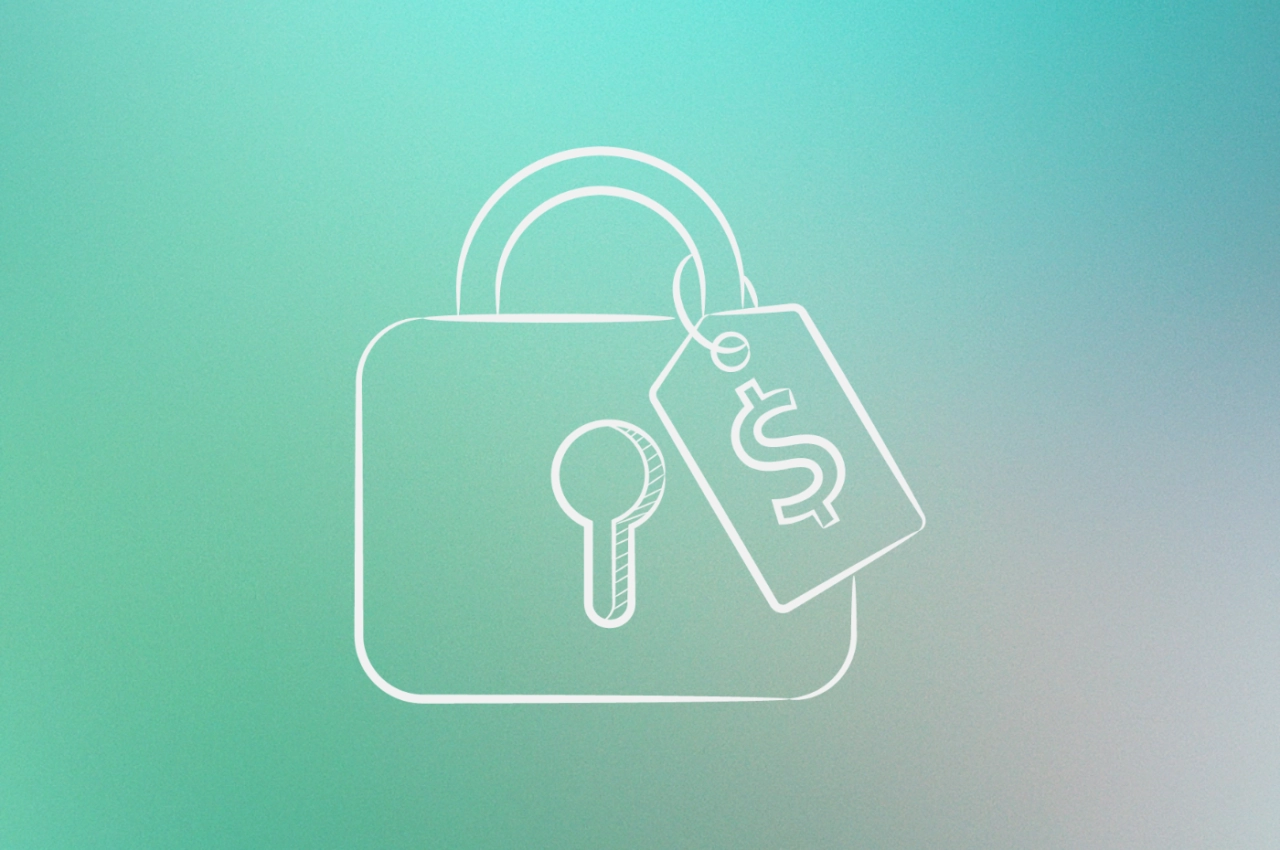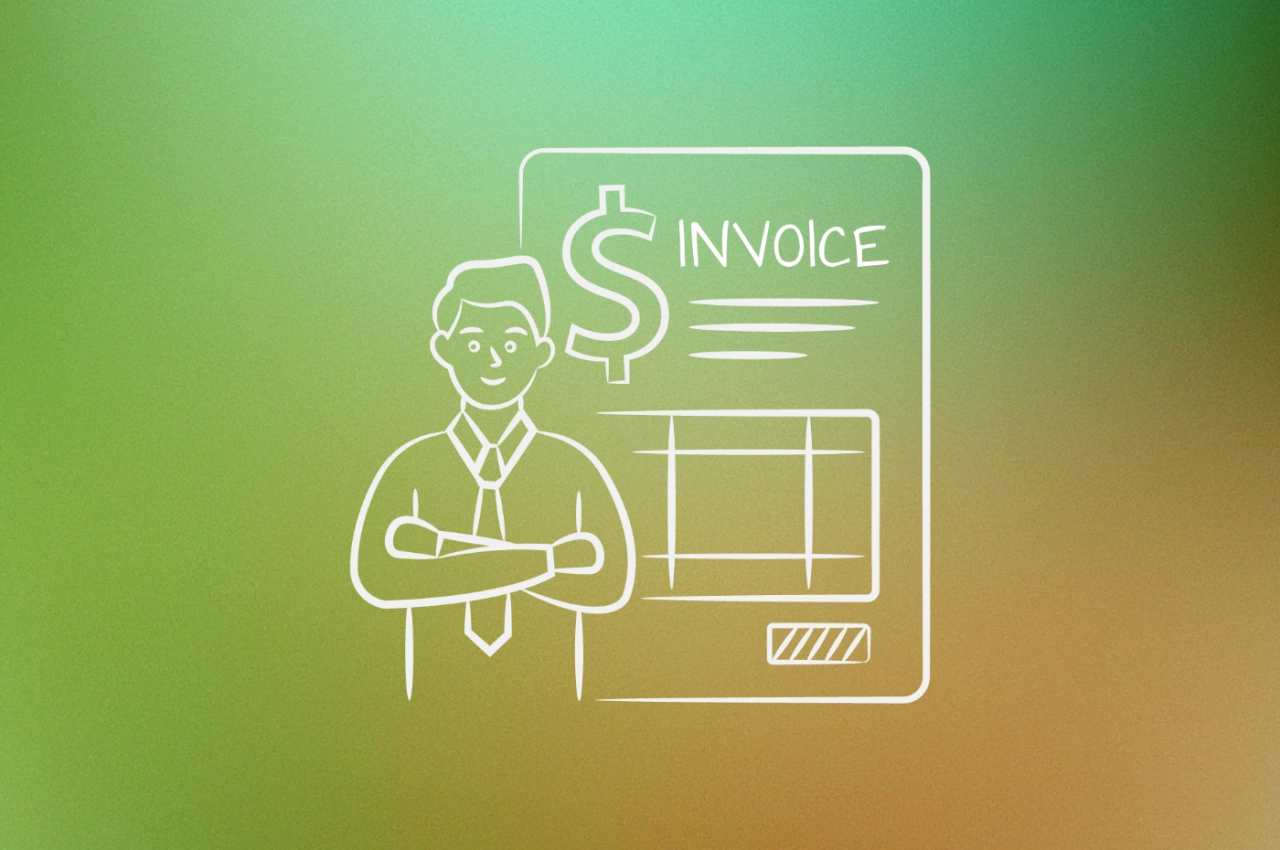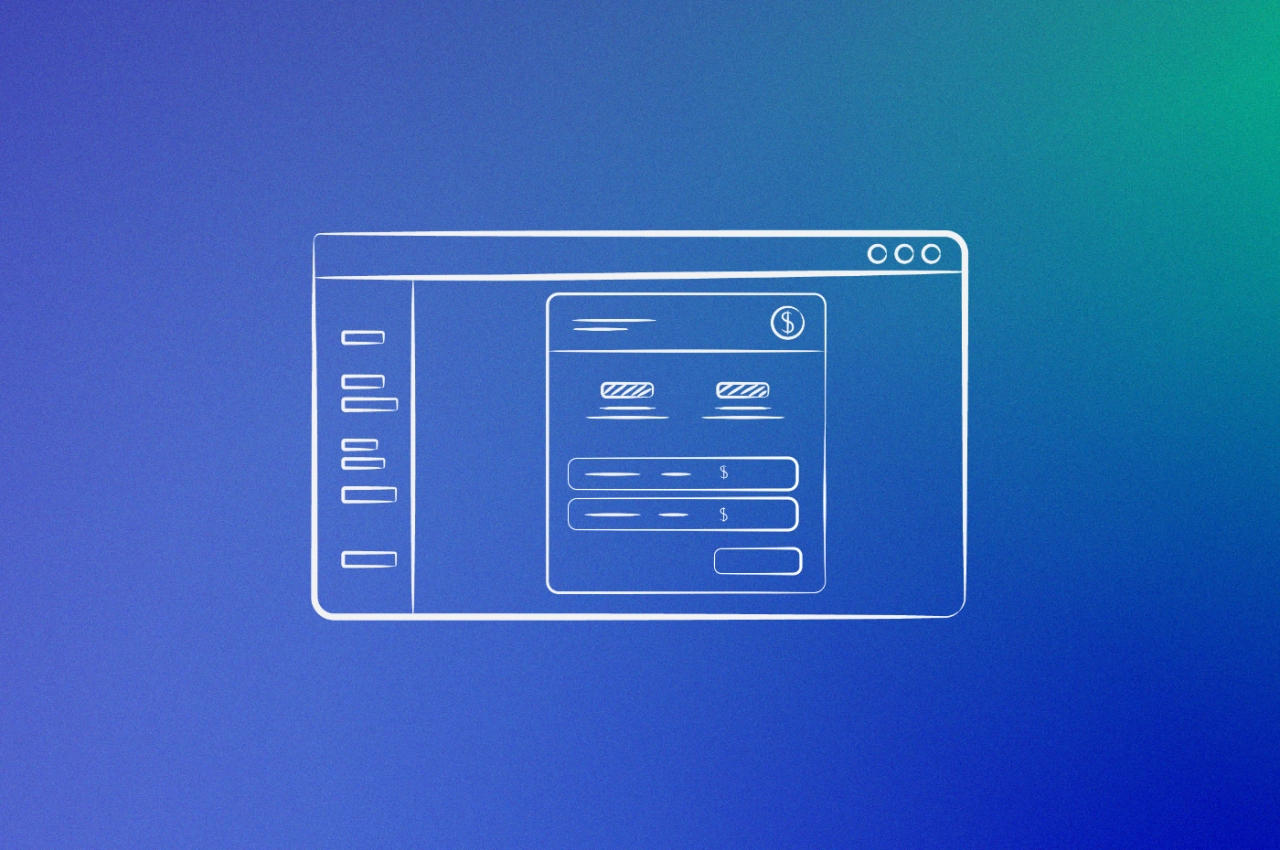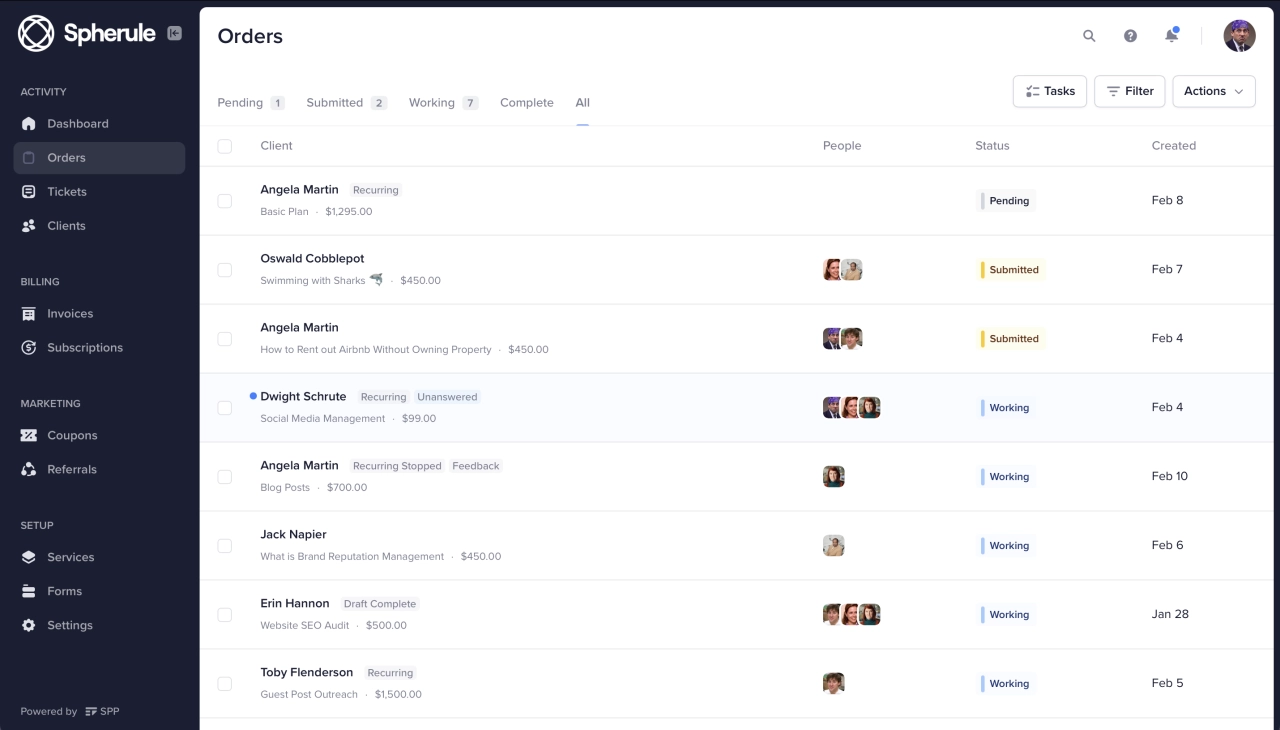- Recurring services can provide a reliable source of income for service-based businesses.
- When pitching recurring services to clients, emphasize the value and benefits they will receive over time.
- Consider offering discounts to clients who sign up for yearly recurring services to incentivize them to commit long-term.
If you have a great solution for a persistent problem, your customers likely want it repeatedly—which is why it’s so important to focus on the right agency pricing strategy. And that should involve you selling your services on a recurring basis.
Successful agencies use automation tools to sell recurring services, allowing them to scale and personalize conveniently. If you’re looking to join them and start selling your services the easy way, this post is for you.
What are recurring services?
Recurring services represent a business model in which a solution or service is consistently provided to customers on a regular schedule, contingent upon periodic payments made for the service. Typically, these recurring charges are billed on a monthly, quarterly, or annual basis, and customers sign up using a secure payment method such as a credit card. Payment platforms like Stripe or PayPal are commonly used to facilitate these transactions safely and efficiently.
The benefits of a recurring service
Modern payment methods and recurring services make life easier for customers and agencies. For the latter, automated electronic billing improves cash flow and allows for various automations. They don’t need to track payments manually or mark invoices as paid anymore.
Paired with a client portal such as SPP.co, payments are automatic. Clients can easily check out using an order form. The automatic account creation allows them to place a new order later on. This eliminates a lot of friction and improves the B2B customer journey.

For customers, recurring services make payments seamless, and they don’t need to worry about unpaid invoices.
How to create a subscription service
Now, let me show you how you can create your own recurring service inside Service Provider Pro.
1. Consider your ideal client
In a previous interview with SPP, Kenny Schumacher, a serial entrepreneur with two successful productized agencies, advises that we should find a niche that we’re better at than anyone else.
Niching down helps us target a very specific customer and provide five-star service – a better alternative to offering various recurring services with subpar quality (even if it’s not, it will be perceived as such compared to a specialized agency).
If you want pizza, would you go to a franchised restaurant that sells pizza among wings, lobster, and pasta, or would you visit the local Italian diner that only makes really good pizza? Probably the latter. You’re in the mood for an amazing pizza. It’s a similar principle.
Like the Italian pizza diner, build out your ideal client and be very specific about it for your productized agency. Once you know their exact problems, position your solutions and marketing efforts for them only. When you offer a truly personalized service with great quality, you set your recurring subscriptions up for success from the get-go.
Remember that there are levels to this. Even in your niched-down market, there will be players of varying sizes, and that’s where you should explore tiered pricing that suits their different-sized appetites.
2. Conduct competitive analysis
Once you’ve established who specifically you want to sell to, study your top competitors in this niched-down market. Look at how they’ve structured their recurring subscriptions and compare them to yours.
You don’t have to mimic their approach, because your strategy may (or may not) be better. Dig deep and ask questions on why your competitors have chosen their tiered offering the way they did, and how you could make yours even better.
There’s also the option to adapt competition based pricing, but that has its own challenges in the service business.
Another thing to keep in mind is how much it costs you to actually deliver the service. For instance, if your business evolves around generating leads, can you constantly create new ones at the same price? Is there a limit you’ll eventually hit? These are questions you need to ask before offering your services.
3. Set up your recurring services
With SPP, you can easily create pricing tiers. They should clearly show the value your clients are receiving for the asking price. For instance, if you want to offer a monthly recurring SEO service, clearly define what the client is getting in return. Mention everything that is included in the service description.
Here’s how you set up the recurring service in SPP:
go to Services
click the + Service button
enter service name and description
set the price
toggle the recurring service option
Adding value doesn’t stop with pricing tiers; you can offer additional services in your order forms as well. For example, an SEO agency might offer a keyword audit on top of a monthly plan as an add-on service. This is something you can easily set up in SPP:
go to Services
click the + Service button
enter service name and description
set the price
check the add-on box
select the parent service
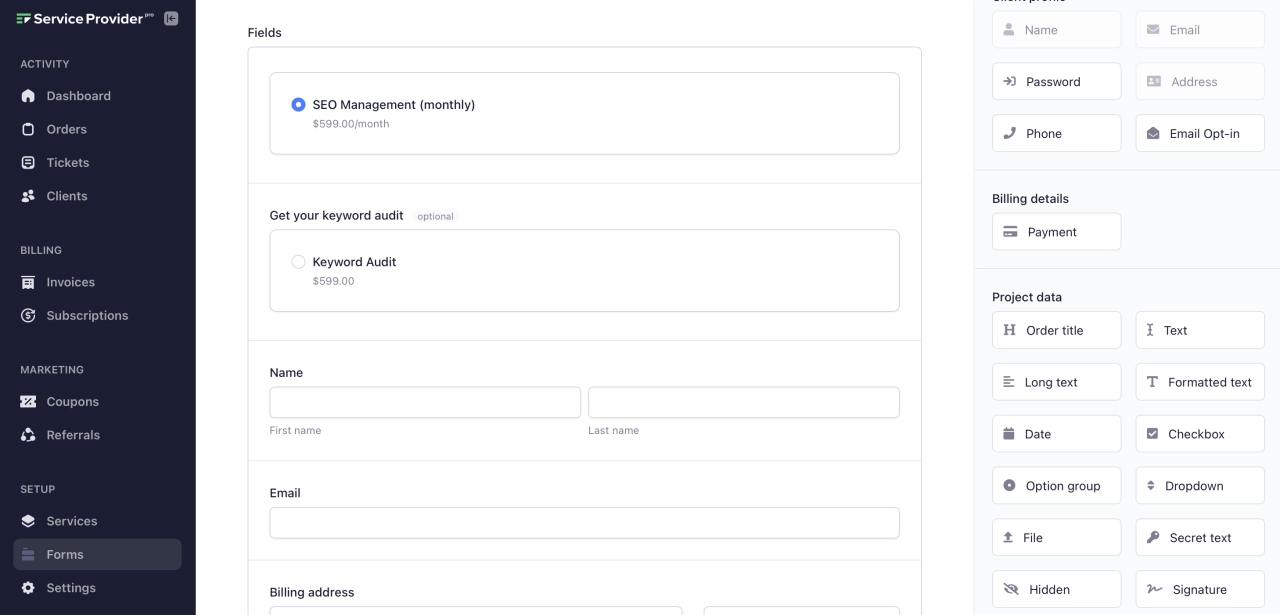
You can now sell the content audit on top of your recurring SEO services. Finally, add both services to an order form, and add it to your pricing page on your website.
One of the greatest advantages of the order forms is their ability to facilitate seamless payment acceptance. For recurring services, they automatically set up a subscription within Stripe or PayPal, ensuring future payments are deducted without manual intervention.
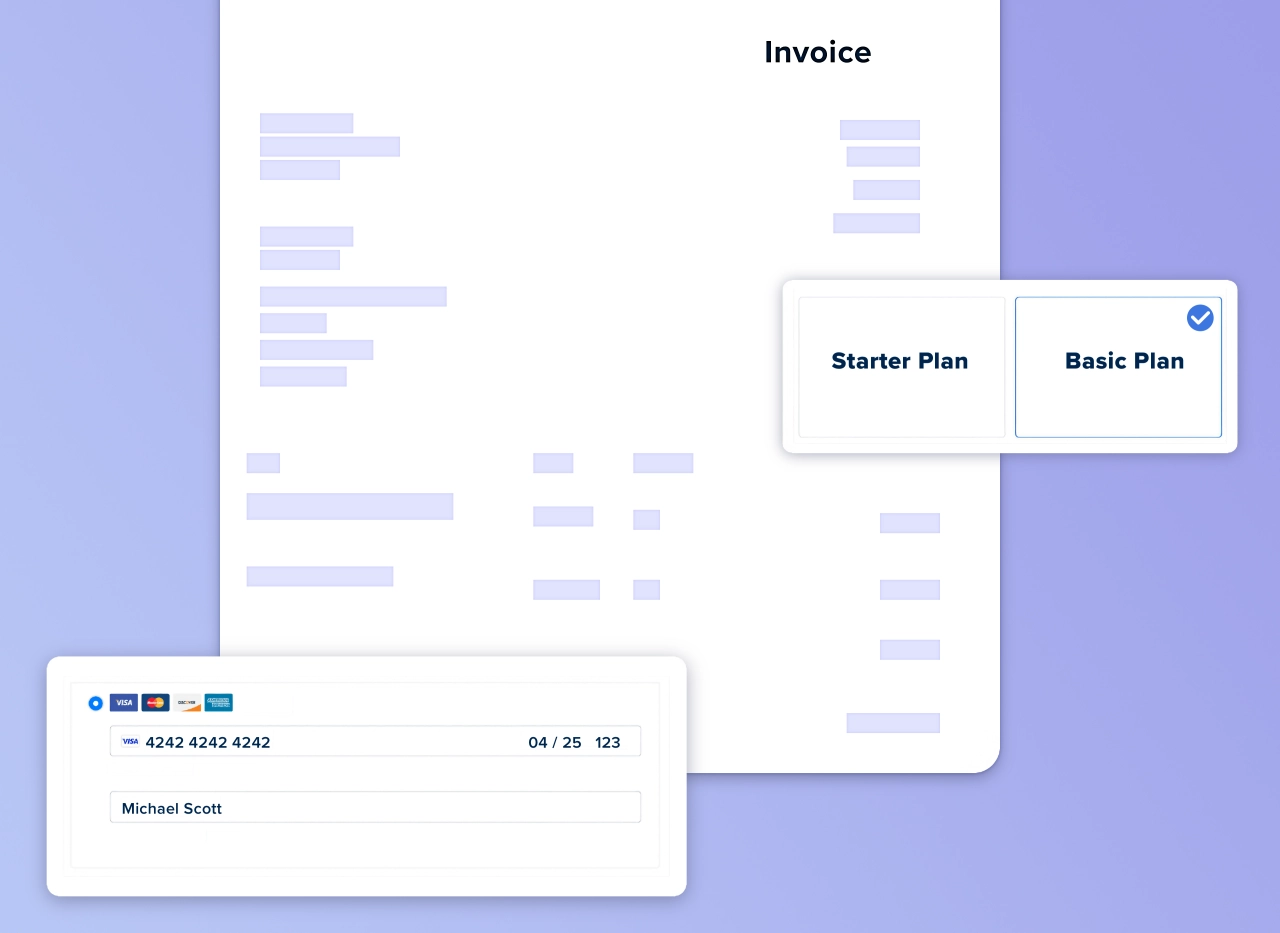
Invoice and collect payments automatically and on time.
Reducing recurring service churn
While recurring revenue is beneficial for making future projections more predictable, it is not without flaws. You can still miss out on revenue, so here are a few tips to prevent that.
Use client analytics to lean into your best customers
For many businesses, losing customers often brings up the question: why did they cancel their subscription?
To find the answer to that question, a common churn-reducing strategy is to identify all the customers that are most likely to cancel your recurring subscription-as-a-service and make strides in keeping them aboard.
But you can refine this approach to guarantee a better return on investment while saving on some costs by identifying a more specific pool of your most profitable clients and hyper-focusing on pulling them back from the brink of churning.
Tools like SPP, ProfitWell and Stripe provide important insights around your customers’ purchasing habits. For instance, if you’re an SEO agency experiencing a ton of churn with your most affordable package from clients who don’t completely understand the amount of investment that SEO requires to be successful, it may be time to phase out that package and focus towards acquiring clients with more budget to spend on SEO.
Troubleshoot poor-earning services
On the SPP analytics dashboard, you’re able to get an overview of every recurring billing service you offer, and their respective performance in terms of units sold and revenue.
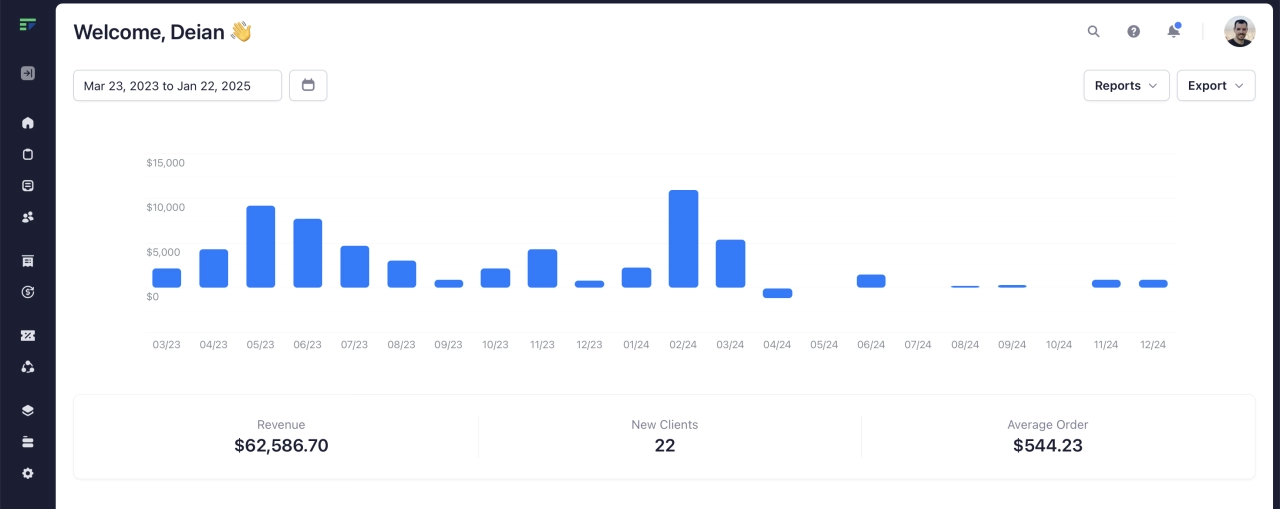
Naturally (based on the industry demand), some subscription services may be more popular than others. But other times, you may have the opportunity to deduce why one plan isn’t doing as well as another and work to make it more attractive and enticing.
That could mean re-evaluating the needs of the customer segment you’re trying to target with that package, including other add-ons, lowering prices, or it can be as simple as renaming it for a different perception.
On the flipside, by identifying your best-performing plans, and looking at their monthly trends, you can make adjustments to keep up with or one-up competitors. You can study which parts of your plan users enjoy most and brainstorm if you can deliver it even better than before. If you don’t change with time, then customers will see newer, better options and be tempted to make the switch.
Offer long-term discounts
One of the most expensive aspects of running an agency is obtaining new clients. At the same time, any agency needs to reduce churn of early canceling clients.
While commitment can’t be forced, it can be encouraged by offering quarterly and annual discounts. Many agencies who use SPP are obtaining long-term commitments by providing these options. Here’s how it works:

You’ll first create a duplicate of the service by clicking the [ ⋮ ] button next to the service. Adjust the service name, price, and billing period in accord with the discount you want to offer. You’d then create rules in the order form to show and hide annual services based on a checkbox.
Be proactive with your communication
When you reach out to your customers before they need you, you demonstrate your commitment to helping them get the most out of your product or service. You also ensure that they’re seeing the success to justify staying with you, improving your account retention.
Let’s say you’re running an SEO agency: if the client thinks they just need a regular batch of blog posts and pays you only for that with no backlinking efforts, it won’t be long before they don’t see any meaningful results. They’ll be disheartened and more prone to canceling your seemingly useless subscription.
But if you’re proactive with your communication and problem-solving, you can define a clear roadmap with a holistic solution for your client. Using SPP’s client messaging portal for example, you can quickly and casually notify your client that they may need additional services and show them how exactly it would help them.
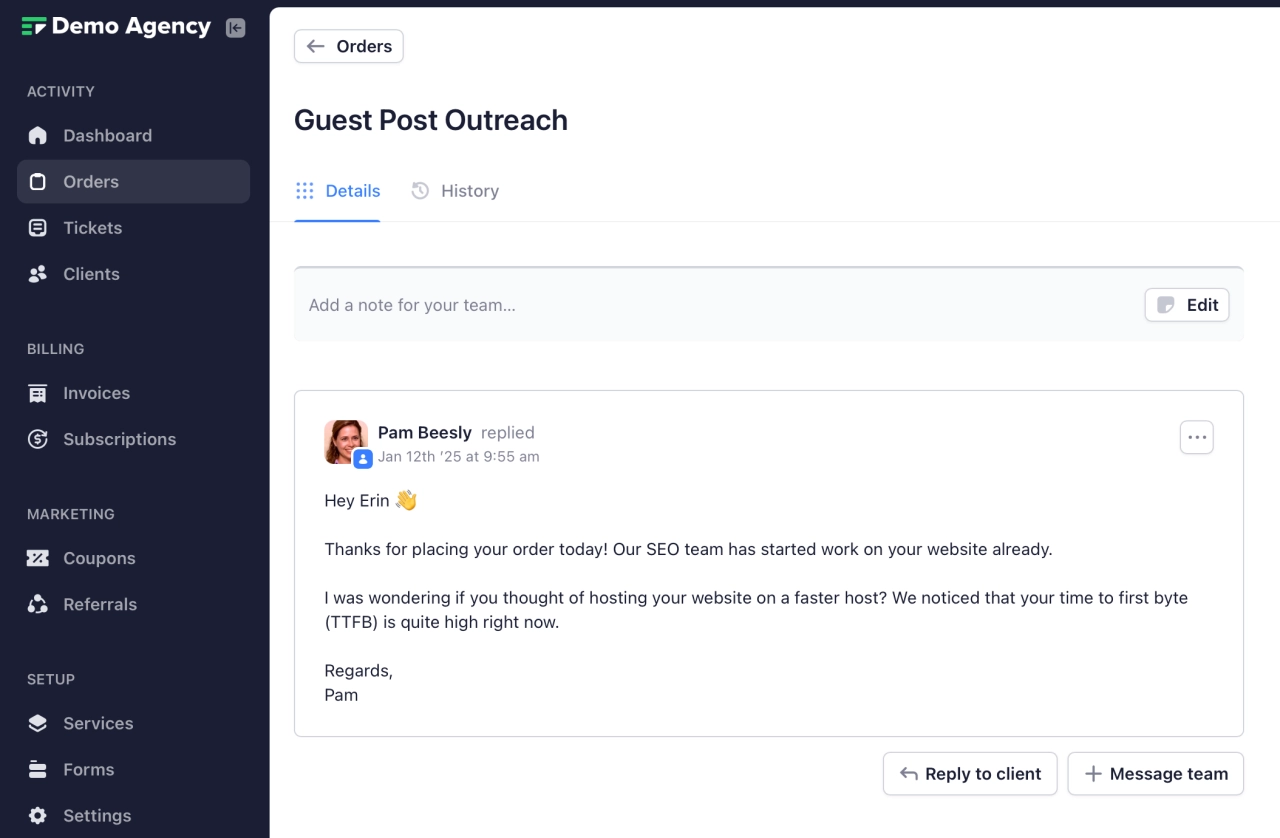
In simpler scenarios, it’s also a best practice to give your clients regular updates and make them feel involved with the process. You can do so by proactively sending them messages on where your team is at with their order, or by making use of client reporting so they can track your results.
Tip: Providing an excellent customer experience can lead to increased referrals, help you improve your services (by better catering to their needs), jumpstart word-of-mouth traction, and decrease churn by building a loyal client base!
Final thoughts
Any agency should think about selling recurring subscriptions. Not only does it help to scale an already successful business, it removes a lot of manual tasks for all parties. Thanks to SPP’ features, implementing subscription based services is very easy. And the seamless checkout process removes many hurdles for new and existing agency clients.
That being said, don’t be afraid to experiment with different recurring service bundles. Test out your pricing strategy model and try to reengage lost clients with new recurring subscription models.
Once you start offering your services as subscriptions, keep an eye on the monthly recurring revenue. You’ll notice that you can better understand your income, project it, and make decisions based on your new data.



